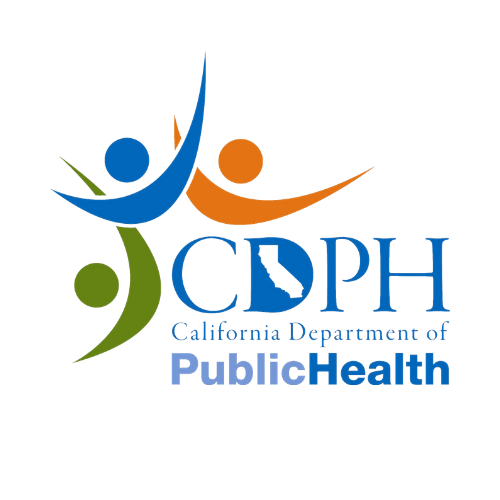Beyond the Blueprint for Industry and Business Sectors - Effective June 15

When California fully reopens the economy, the state will move beyond the Blueprint for a Safer Economy. Beginning June 15, all sectors listed in the current Blueprint Activities and Business Tiers Chart may return to usual operations (with the limited exceptions noted below for Mega Events) based on the following general public health recommendations:
| Restrictions Applying to Indoor & Outdoor Settings | |
|---|---|
| Vaccine Verification / Negative Testing |
Required for Indoor mega events Recommended for Outdoor mega events |
| Capacity Limitations | No restrictions |
| Physical Distancing | No restrictions for attendees, customers and guests |
| Masking | Follow current CDPH Guidance for Face Coverings |
| Travelers | Follow CDC recommendations and CDPH Travel Advisory |
Employers are subject to the Cal/OSHA COVID-19 Prevention Emergency Temporary Standards (ETS), if applicable to them.
Limited Exceptions for Mega Events:
Mega Events are characterized by large crowds greater than 5,000 (indoors) and 10,000 (outdoors) attendees. Mega Events may have either assigned or unassigned seating, and may be either general admission or gated, ticketed and permitted events.
Mega Events are considered higher risk for COVID transmission because:
-
-
Participants and attendees are spending extensive periods of time physically close to large numbers of people they don't usually interact with.
-
The frequency and total duration of close contact between attendees is increased, thereby increasing the risk that respiratory particles will be transmitted between attendees and participants.
-
They draw from beyond the nearby community and will often draw attendees and participants from other states and countries who may be infected with more infectious COVID variants.
-
Effective contact tracing may be difficult given the number of potential uncontrolled mixing between groups and attendees and the nature of the events.
-
- For Indoor Mega Events (example: conventions/conferences/expos/sporting events and concerts):
-
In addition to the general public health recommendations:
-
Verification of fully vaccinated status** or pre-entry negative test* result is required of all attendees.
-
Information will be prominently placed on all communications, including the reservation and ticketing systems, to ensure guests are aware of testing and vaccination requirements (including acceptable modes of verification).
-
Attendees must follow CDPH Guidance for Face Coverings.
-
-
-
For Outdoor Mega Events (example: music or food festivals/car shows/large endurance events and marathons/parades/sporting events and concerts):
-
In addition to the general public health recommendations:
-
Verification of fully vaccinated status or pre-entry negative test result is strongly recommended for all attendees. Attendees who do not verify vaccination status should be asked to wear face coverings.
-
Attendees must follow CDPH Guidance for Face Coverings.
-
Information will be prominently placed on all communications, including the reservation and ticketing systems, to ensure guests are aware that the State strongly recommends that they be fully vaccinated, obtain a negative COVID-19 test prior to attending the event, or wear a face covering.
-
Venues are required to make available masks for all attendees.
-
-
- Additional recommendations for sponsors of Mega Events:
-
-
Encourage everyone to get vaccinated when eligible.
-
Facilitate increased ventilation of indoor spaces (i.e., open all windows and doors to increase natural air flow), following current CDPH and CalOSHA guidance.
-
Encourage everyone to sign up for CA Notify as an added layer of protection for themselves and the community to receive alerts when they have been in close contact with someone who tests positive for COVID-19.
-
Convey the risk of attending large crowded events where the vaccine status of others in attendance may be unknown to the individuals.
-
Convey the risk of attending large crowded events for populations that may not currently be eligible for vaccination, or may be immunocompromised and whose vaccine protection may be incomplete.
-
Encourage all venues along any parade or event route to provide outdoor spaces for eating/drinking/congregating to reduce the risk of transmission in indoor settings.
-
The requirements and recommendations for negative testings / vaccine verification will be in place effective June 15, 2021 through October 1, 2021. The state will assess conditions by September 1, 2021, to determine whether updated requirements or recommendations are needed beyond October 1, 2021.
CDPH will continue to provide updated guidance for youth, healthcare and high-risk congregate settings.
* Pre-entry negative testing
- Definition: Testing must be conducted within 72 hours before event start time (both PCR and antigen are acceptable). Results of the test must be available prior to entry into the event or venue.
- Verification: The following are acceptable as proof of a negative COVID-19 test result: printed document (from the test provider or laboratory) OR an email or text message displayed on a phone from the test provider or laboratory. The information should include person's name, type of test performed, and negative test result (date of test must be within prior 72 hours). Businesses and venue operators may also utilize self-attestation at point of registration, during ticket purchase or on the day of the event prior to entry into the venue.
** Fully vaccinated
- Definition: See current CDPH Guidance for Fully Vaccinated Persons for definitions, acceptable vaccines, and updates on additional vaccines as they are approved.
- Verification: The following are acceptable as proof of full vaccination: Vaccination card (which includes name of person vaccinated, type of vaccine provided and date last dose administered) OR a photo of a vaccination card as a separate document OR a photo of the attendee's vaccine card stored on a phone or electronic device OR documentation of vaccination from a healthcare provider. Businesses and venue operators may also utilize self-attestation at point of registration, during ticket purchase or on the day of the event prior to entry into the venue.
